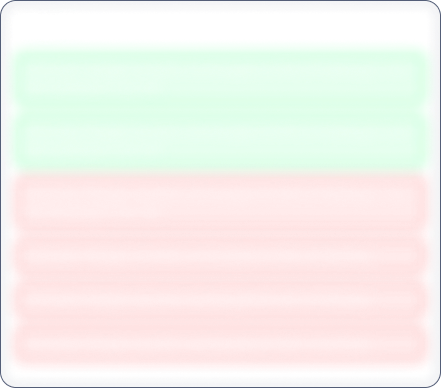Year End Sale 50% off
Chandan Healthcare

No Data Available
Investor Sentiment
Chandan Healthcare Share price and Fundamental Analysis
Key Metrics
Stock Returns
Stock Heatmap

No Stocks
Smart Score

Unlock Smart Score
See Detailed Analysis & Insights


Unlock Insights
See Detailed Analysis & Insights
Technicals
Returns Calculator
If you would have investedResearch Report
No Research Report
Corporate Action

No Data Available
Financials
Key Ratios
ROE
Avg ROE (3 Yrs) : NaN%
ROCE
Avg ROCE (3 Yrs) : NaN%
ROA
Avg ROA (3 Yrs) : NaN%
NPM
Avg NPM (3 Yrs) : NaN%
Dividend History
5 Year FactSheet
Documents

No Data Available
News
Chandan Healthcare Management and History
Company Management


Unlock Management Data
See Detailed Analysis & Insights
Company History
Chandan Healthcare Limited, established on September 03, 2003, specializes in operating state-of-the-art laboratories that offer comprehensive pathological investigations. The Company run a diagnostic network in North India with pathology and radiology testing services. Their services encompass biochemistry, hematology, histopathology, microbiology, and immunology. Additionally, it provide an extensive array of radiology services, including CT scans, X-rays, and MRIs.
The Company commenced business by starting its first diagnostic centre in Indra Nagar, Lucknow in 2003. Later, it started the diagnostic centre in Dehradun in 2013. It has established a chain of Retail Pharmacies in Uttar Pradesh, Uttarakhand, and Delhi, along with wholesale distribution to our retail outlets and hospitals. Operating in Lucknow, Chandan Hospital Limited is a 300-bed tertiary care Multi-Super-specialty Hospital that has quickly gained recognition as one of the leading hospitals in the region since its opening on October 1st, 2018.
As of August 31, 2024, the Company has 1 flagship laboratory, 7 central laboratories, 26 satellite centres, more than 300 collection centres and located across India, with facilities in more than 15 cities and towns across Uttar Pradesh and more than 10 cities and towns in Uttarakhand. Out of various laboratories, 8 are National Accreditation Board for Testing and Calibration Laboratories (NABL) accredited while three of the diagnostic centres have National Accreditation Board for Hospitals & Healthcare Providers (NABH) accreditation.
Apart from these, the Company provide nearly 1118 tests across different specialties. These test menu includes 169 routine pathology tests, covering basic biochemistry and hematology, as well as 713 specialized pathology tests, such as immohistopathology, and molecular pathology, and 236 radiology tests, including basic x-rays, ultrasonography (USG), computed tomography (CT), magnetic resonance imaging (MRI), and specialized CT scans. Radiology facilities have 11 CT scanners and 4 MRI machines. Committed to accuracy and reliability, the Company supports healthcare professionals and patients by delivering essential diagnostic services.
The Company is planning an IPO aggregating upto 68,99,936 Equity Shares of Face Value of Rs 10 each comprising a Fresh Issue of 46,00,000 Equity Shares and 22,99,936 Equity Shares through Offer for Sale.
Chandan Healthcare Share Price
Chandan Healthcare share price reflects investor sentiment toward the company and is impacted by various factors such as financial performance, market trends, and economic conditions. Share price is an indicator which shows the current value of the company's shares at which buyers or sellers can transact.
Chandan Healthcare Market Cap
Market capitalization of Chandan Healthcare indicates the total value of its outstanding shares. Marketcap is calculated by multiplying share price and outstanding shares of the company. It is a helpful metric for assessing the company's size and market Valuation. It also helps investors understand how Chandan Healthcare is valued compared to its competitors.
Chandan Healthcare PE Ratio
Chandan Healthcare PE ratio helps investors understand what is the market value of each stock compared to Chandan Healthcare 's earnings. A PE ratio higher than the average industry PE could indicate an overvaluation of the stock, whereas a lower PE compared to the average industry PE could indicate an undervaluation.
Chandan Healthcare PEG Ratio
The PEG ratio of Chandan Healthcare evaluates its PE ratio in relation to its growth rate. A PEG ratio of 1 indicates a fair value, a PEG ratio of less than 1 indicates undervaluation, and a PEG ratio of more than 1 indicates overvaluation.
Chandan Healthcare ROE (Return on Equity)
Return on Equity (ROE) measures how effectively Chandan Healthcare generates profit from shareholders' equity. A higher ROE of more than 20% indicates better financial performance in terms of profitability.
Chandan Healthcare ROCE (Return on Capital Employed)
Return on Capital Employed (ROCE) evaluates the profitability of Chandan Healthcare in relation to its capital employed. In simple terms, ROCE provides insight to investors as to how well the company is utilizing the capital deployed. A high ROCE of more than 20% shows that the business is making profitable use of its capital.
Chandan Healthcare Total Debt
Total debt of Chandan Healthcare shows how much the company owes to either banks or individual creditors. In simple terms, this is the amount the company has to repay. Total debt can be a very useful metric to show the financial health of the company. Total debt more than equity is considered to be a bad sign.
Chandan Healthcare Debt to Equity Ratio
The Debt-to-Equity (DE) ratio of Chandan Healthcare compares its total debt to shareholders' equity. A higher Debt to Equity ratio could indicate higher financial risk, while a lower ratio suggests that the company is managing its debt efficiently.
Chandan Healthcare CAGR (Compound Annual Growth Rate)
CAGR shows the consistent growth rate of Chandan Healthcare over a specific period, whether it is over a month, a year, or 10 years. It is a key metric to evaluate the company’s long-term growth potential. Main metrics for which CAGR is calculated are net sales, net profit, operating profit, and stock returns.
Chandan Healthcare Technical Analysis
Technical analysis of Chandan Healthcare helps investors get an insight into when they can enter or exit the stock. Key components of Chandan Healthcare Technical Analysis include:
Support Levels (S1, S2, S3)
There are usually multiple support levels, but the main support levels for a stock are S1, S2, S3. Support levels indicate price points where stock might get support from buyers, helping the stock stop falling and rise.
Resistance Levels (R1, R2, R3)
There are usually multiple resistance levels, but the main resistance levels for a stock are R1, R2, R3. Resistance levels represent price points where Chandan Healthcare shares often struggle to rise above due to selling pressure.
Chandan Healthcare Dividends
Dividends refer to the portion of the company’s profits distributed to its shareholders. Dividends are typically paid out in cash and reflect Chandan Healthcare ’s financial health and profitability.
Chandan Healthcare Bonus Shares
Bonus shares are usually given by companies to make the stock more affordable, increase liquidity, boost investor confidence, and more.
Chandan Healthcare Stock Split
Stock split increases the number of its outstanding shares by dividing each existing share into multiple shares. When the company offers a stock split, the face value of the stock reduces in the same proportion as the split ratio.
Chandan Healthcare Financials
The financials of Chandan Healthcare provide a complete view to investors about its net sales, net profit, operating profits, expenses, and overall financial health. Investors can analyze financial data to assess the company’s stability and also understand how the company has been growing financially.
Chandan Healthcare Profit and Loss Statements
The profit and loss statement of Chandan Healthcare highlights its net sales, net profit, total expenditure, and operating profits in the current financial year. This Profit and Loss statement is crucial for evaluating the profitability and financial stability of Chandan Healthcare .
Chandan Healthcare Balance Sheet
The balance sheet presents a snapshot of Chandan Healthcare ’s assets, liabilities, and equity of shareholders, providing insights into the financials of the company.
Chandan Healthcare Cashflow Statements
Cashflow statements track the company's cash inflows and outflows over a period. It is an essential tool for understanding how well the company manages its liquidity and finances.


